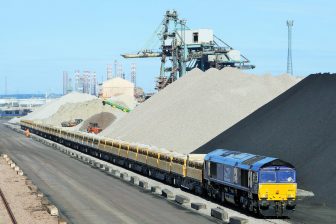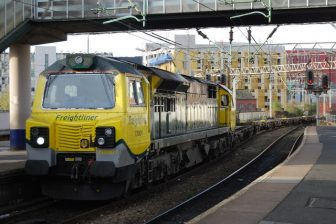Remove constraints to future growth for rail freight

The UK could see strong long-term growth in the sector, as long as the strategic planning of the rail network takes rail freight into account. This was the forecast of Mike Garratt, a UK consultant during the RailFreight Webinar UK.
Mike Garratt, principal of MDS Transmodal, a consultancy based in the north of England, has predicted a changed landscape for rail freight, but expressed optimism for the future during the webinar held on 1 May. He identified areas of growth in the economy being supported by rail freight operations.
Clear direction of travel
“The UK continues to consume and build infrastructure, but heavy industry is in decline and long term zero carbon policies will eventually eliminate all coal, petroleum and biomass traffic”, he said. “The non-carbon sector is growing, at a time when overall road freight traffic is falling. So the clear direction of travel is for quite rapid growth in rail freight overall. The real question has to be, where is the capacity to handle that extra growth”.
Historically, rail freight tonnage is very much lower than in the past. In 1967, over 200 million tonnes of cargo was transported. Much of that was for the now redundant coal industry. That weight lifted had fallen to just 80 million tonnes in the past twelve months. “A consequence of de-carbonisation, de-industrialisation and road competition”, noted Garratt. However, since 2005, intermodal rail freight had grown by 46 per cent and construction traffic by 16 per cent while total rail freight had fallen by 17% as non-carbon flows take over.
Network Rail and Department for Transport
MDS Transmodal has conducted studies for Network Rail and the Department for Transport, identifying continuing growth in intermodal and construction, where costs favour rail. “Imports continue to replace local production”, says Garratt. “There is continued demand for hard-rock aggregates, sourced in the north and west of Great Britain, to service projects in the south-east”.

For the avoidance of raising a political point, locally sourced aggregates are also in demand for projects that do not have ‘London’ in the title. “Growth is becoming more concentrated on long distance movement of domestic and intermodal container traffic and construction, and not in traditional ‘pit to power station’ movements of heavy coal trains”, he says.
Future traffic patterns
Unconstrained rail freight volumes are predicted to grow by 142 per cent by 2043-4, representing a compounded rail growth rate of 3.6 per cent. The sector growth predicted for intermodal traffic is stronger still, at 4.5 per cent. According to the figures compiled by the consultancy, purely domestic UK intermodal traffic is 45,000 tonnes per week, and it is the only sector that has not fallen in the current crisis.
The future traffic patterns, as predicted by Garratt, place even greater demands on the north-south axis across Britain. Inevitably, the West Coast Main Line takes a significant proportion of that extra load, along with container ports, particularly Felixstowe and Southampton. Britain may have become politically distanced from Europe, but geographical sentiment is rather more long-term, and goods will continue to move, regardless of the administrative necessities.
Reduced competitiveness
In the same period as examined by MDS Transmodal, passenger traffic has doubled, with much of that demand concentrated on the same routes as south after by freight. “Rail has been very successful in lobbying for political support, but passengers vote, intermodal containers do not”, says Garratt. “Without more capacity, even short-term rail freight growth will be inhibited. That will be even more apparent as we work through a period of social distancing and a potential spread of peak hour density of service to cope with commuter demand”.

Freight diversion to secondary routes, says Garratt, will reduce competitiveness, further eroding the ability of rail freight to make gains in the market. “In a number of studies, we have found that suppressing rail freight development pushes up user costs. Overall, rail can be cheaper than road transport, which is one reason why many large road freight operators have come into the market, and have ambitions to expand into the sector. Modal shift only occurs when the available infrastructure and paths allow the market to discover rail offers commercial savings”.
Conclusions and view again
Garratt says that there is latent value in freight capacity realised by capacity enhancements. That value extends far beyond merely adding paths to the network for more trains to run. He cites examples such as the proposed Trans-Pennine upgrade and, of course, the HS2 project. “The value of capacity released on the conventional network is important, but other factors, such as mode transfer and electrification have value as well”.
The de-facto nationalisation of the passenger operation in Great Britain has raised the likelihood of a permanent retreat from the franchise model. Garratt concludes that a more forward looking management contract regime may well be adopted, where capacity can be defined ahead of demand. “As the railway industry re-emerges from the coronavirus crisis, and faces up to the conclusions of the Williams review, it will be important to establish the case for and the added value of extra rail freight capacity, so that the private sector can invest in the terminals, locomotives and rolling stock required”.
The RailFreight Webinar UK was held on 1 May. As well as Mike Garratt, speakers were Maggie Simpson from Rail Freight Group, and Ben Goodwin from HS2 Ltd. You can view the hour-long webinar here.
You just read one of our premium articles free of charge
Want full access? Take advantage of our exclusive offer




